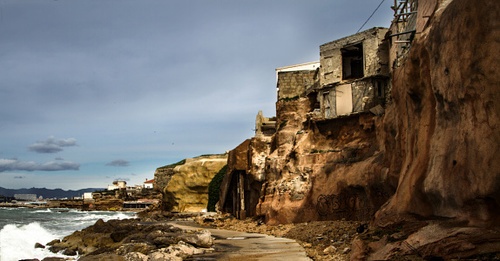
For those of you who missed our recent webinar, "Living on the Edge: Managing Sea Level Rise in California", you can find a recording of the event posted on our website. My colleagues Ben Rubin and John Erskine provided a great overview of ways to protect existing infrastructure and private property through coastal resiliency, what the models and data are suggesting on the future of sea level rise and the status of pending sea level rise legislation in California. I covered risks and possible solutions for public agencies and property owners, with a focus on how Coastal Commission and local agency regulations could infringe upon property rights and potentially trigger a taking. I also touched on one piece of legislation, Senate Bill 83, and whether it is likely to provide much help.
Senate Bill 83 was recently the subject of an article in Forbes, titled “A Dilemma For California Legislators: Preserve Public Beaches Or Protect Coastal Homes.” Essentially, the bill would allow municipalities to obtain low-interest loans to buy coastal properties and rent those properties back to homeowners to raise enough money to pay back the loan. Conceptually, the plan sounds great: it would protect homeowners against property loss; it would give control of the land to the state to ensure that, when the time comes, the house could be dismantled or moved; it would give homeowners a way to sell their home while property values remain high; and agencies could potentially recover the costs of purchasing the properties by renting them out in the interim.
However, as I mentioned in our webinar, I think the bill could face some problems:
- As currently drafted, the legislation is contingent upon homeowners being willing to sell. Based on some preliminary discussions with clients that own coastal properties, none appears to be jumping at the opportunity to sell their home and move inland. And if the program were amended to allow for involuntary acquisitions (e., meaning use of eminent domain), the legislation could face constitutional challenges (since public agencies would be condemning private property and then renting it out to other private users, and not putting the property to a “public use” within a required and defined timeframe).
- Creating a short-term rental program for coastal properties could disrupt neighborhoods or conflict with CC&Rs or local coastal regulations prohibiting short-term rentals, and could result in public agencies trying to become property managers competing with well-known online vacation rental companies.
- Financially, even if agencies are able to secure low-interest loans, if they are required to pay fair market value, the deal may not pencil out. Properties that can be rented are typically valued based on the anticipated rental income generation. So, for example, if a property generated $100,000 per year in net rental income, that could equate to a $2.5 million value at a 4-percent capitalization rate. That means it would take 25 years just for the government to break even, not even including interest, other holding costs, property management fees, repairs, maintenance, etc.
- By buying up coastal properties, local agencies would be losing some of their most valuable real estate on which they generate property taxes used to help the government function. Some estimates anticipate $150 billion of coastal property that could be impacted by sea level rise--if that estimate is correct, that is a lot of annual property taxes that would disappear.
Senate Bill 83 at least gets some mutual support from both property rights advocates, public agencies and coastal preservation groups since it recognizes that property owners deserve compensation for California’s coastal management policies while offering a voluntary program for managed retreat. If the buyback program works, it could serve as a model for how other states can handle property rights and climate change. Nevertheless, while I applaud the efforts and continued exploration of solutions to address sea level rise while at the same time addressing concerns with managed retreat and protective shoreline devices, my sense is that a program like Senate Bill 83 faces some obstacles.
- Partner
Brad Kuhn, Chair of Nossaman's Eminent Domain & Valuation Group, is a nationally-recognized leader in the areas of eminent domain/inverse condemnation, land use/zoning and other property and business disputes. Brad has spent ...
California Eminent Domain Report is a one-stop resource for everything new and noteworthy in eminent domain. We cover all aspects of eminent domain, including condemnation, inverse condemnation and regulatory takings. We also keep track of current cases, project announcements, budget issues, legislative reform efforts and report on all major eminent domain conferences and seminars in the Western United States.
Stay Connected
 RSS Feed
RSS Feed
Categories
- Administration
- Appraisal
- CLIMATE CHANGE
- CONGRESS
- Construction
- Court Decisions
- EPA
- Events
- Goodwill
- GOVERNMENT ADMINISTRATION
- Inverse Condemnation & Regulatory Takings
- Lawsuit
- New Legislation
- Possession
- Projects
- Public Agency Law
- Publications
- Redevelopment
- Regulatory Reform and Proposed Rules
- Right to Take
- Right-of-Way
- Seminars
- Valuation
- Videos
- Water

